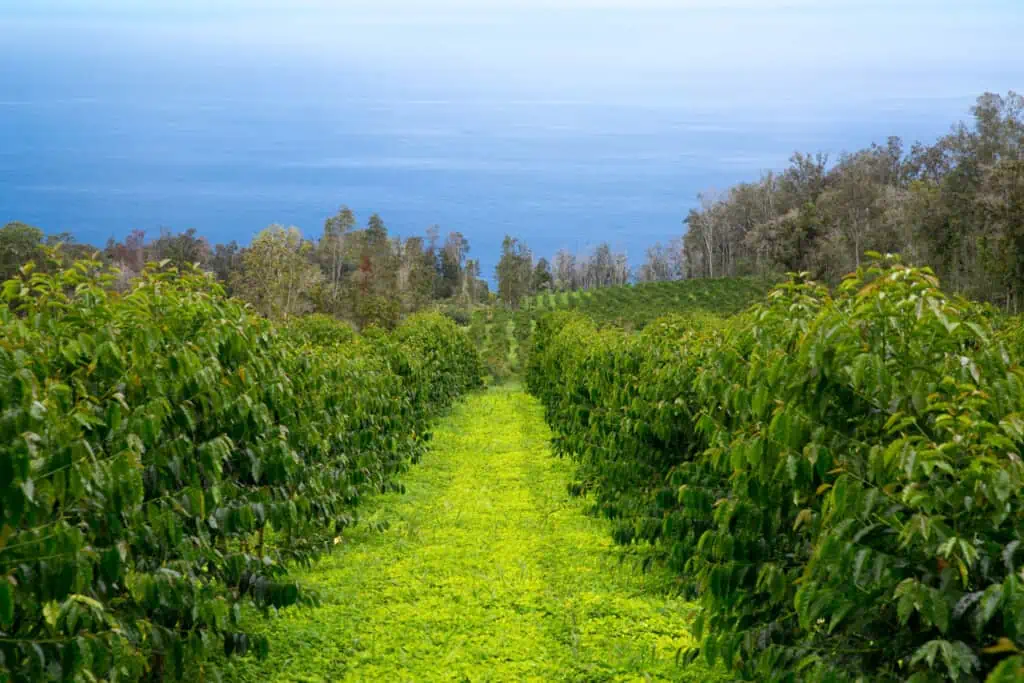
A view of the Pacific Ocean from Hala Tree’s espresso farm in Captain Cook dinner, Hawai’i. Courtesy of Hala Tree.
When maximum folks call to mind Hawaiʻi, we call to mind best seashores, iconic sunsets and extraordinary rest. When espresso enthusiasts call to mind Hawaiʻi, “Kona” is frequently the primary phrase that involves thoughts. However whilst the Hawaiian Islands are, certainly, a paradise, they’re additionally a spot the place espresso is a vital a part of the economic system — an economic system that’s been hammered during the last few years via the Covid-19 pandemic and via devastating wildfires, to not point out agricultural pests and illnesses explicit to the espresso business.
This month, we now not best check out the islands’ coffees — roasted via locals — we additionally scope out what citizens, maximum of whom can’t come up with the money for to shop for Hawaiʻi-grown espresso for on daily basis ingesting — love to have of their morning cup.
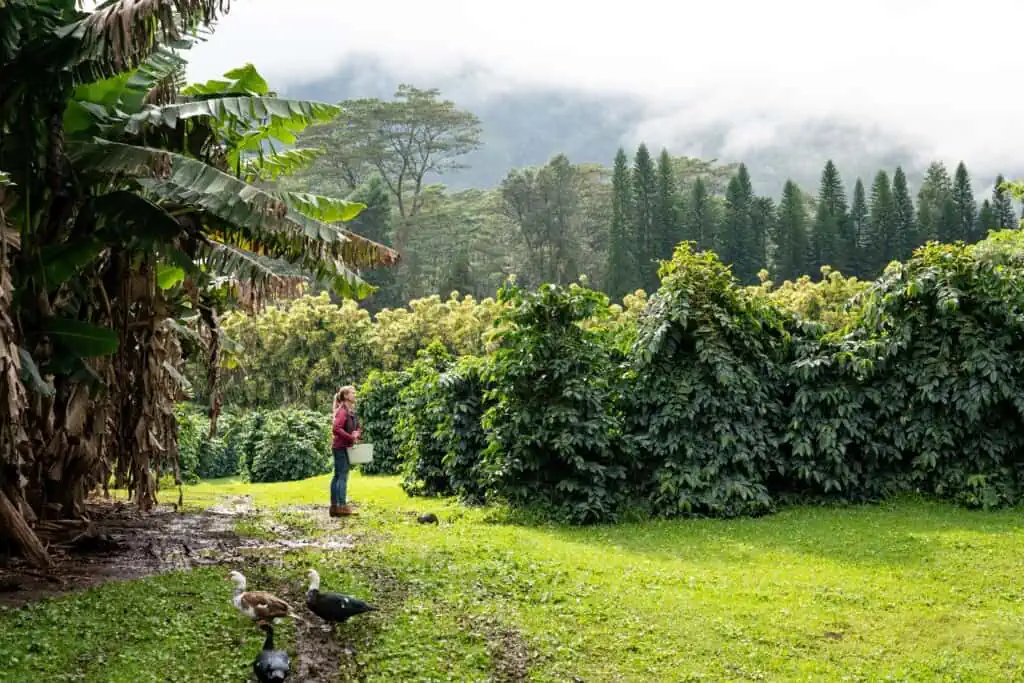
Brandon von Damitz of Giant Island Espresso Roasters surveying espresso timber at Silver Cloud Farm. Courtesy of Braden Tavelli.
There are 3 primary sorts of Hawaiian espresso roasters: espresso farmers who roast their very own inexperienced coffees, roasters that promote best Hawaiian-grown coffees (most commonly to a global marketplace), and roasters that promote each Hawaiian coffees and coffees from different origins.
The Present Context of Espresso in Hawaiʻi
Whilst Hawaiʻi contributes best 0.04 p.c of the sector’s espresso manufacturing, espresso is the second one maximum successful crop grown within the state, an in depth 2nd to macadamia nuts (School of Tropical Agriculture and Human Assets, College of Hawai’i at Manoa). Lots of the espresso grown within the state is exported. Throughout the 2022–23 harvest season, Hawaiʻi farmers produced 24.8 million kilos of espresso, down 9 p.c from the former yr (USDA). One of the crucial leader causes manufacturing is down is the emergence of espresso leaf rust (CLR), a fungal illness that has devastated whole espresso industries in different places on the earth. It first gave the impression on Maui in 2020, then a number of weeks in a while Hawaiʻi Island, referred to as the Giant Island, which produces nearly all of the state’s espresso crop. (For reference, the Giant Island has greater than 1,400 espresso farms, whilst Maui has simply over 300, Kauaʻi has 3, and O’ahu and Molokai every have one.)
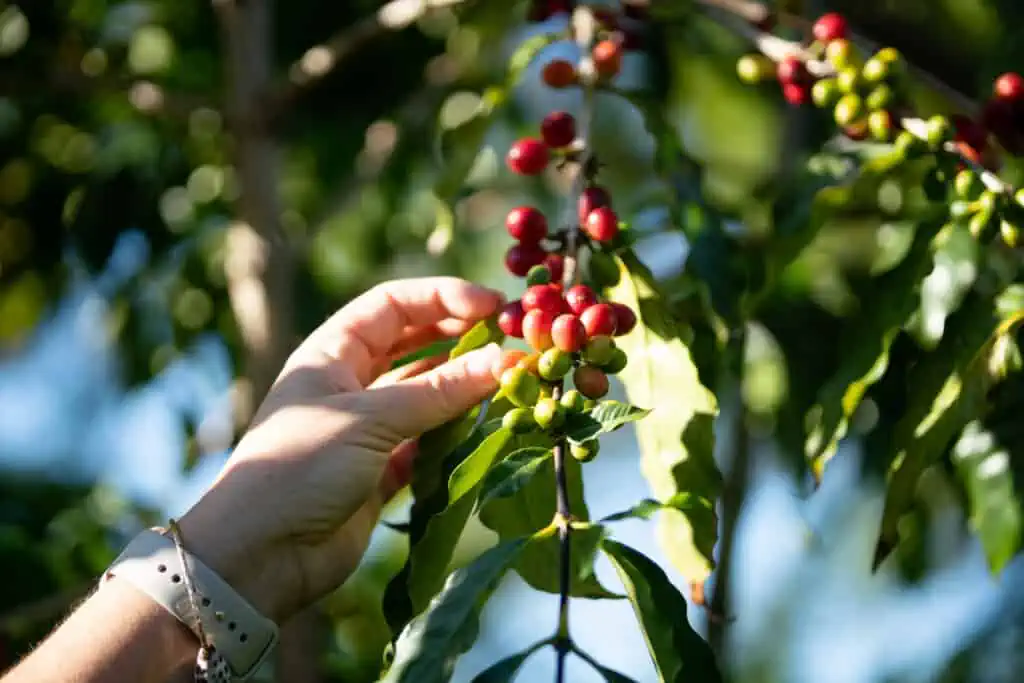
Espresso cherries ripening on Monarch Espresso Farm in Kona, Hawai’i. Courtesy of Monarch Farm.
Sooner than CLR, espresso berry borer (CBB) was once the largest risk to the state’s espresso crop. CBB was once present in Kona in 2010, O’ahu in 2014, Maui in 2016, and Kauaʻi and Lānaʻi in 2020 (School of Tropical Agriculture and Human Assets, College of Hawai’i at Manoa) . This beetle, endemic to Central Africa, was once liable for decimating virtually all of Maui’s small crop that yr. Control tactics are actually in position to fairly curb its possible for destruction, but it surely stays a power.
Finally, there have been a number of wildfires in 2023, and the remarkable scale of the hearth that destroyed the city of Lahaina, Maui, has affected the state’s economic system total, each with regards to its biggest business, tourism, and with regards to the lack of dozens of coffee-related companies. Maui Grown Espresso, the island’s biggest manufacturer, has now not but resumed operations, and plenty of espresso retail outlets had been destroyed or displaced.
One in all Hawaiʻi’s strengths as a manufacturing area is that its espresso costs don’t seem to be, as they’re in maximum origins, tied to the commodity espresso marketplace. Within the Eighties, Kona’s emerging celebrity and the promoting brilliance in the back of it allowed the area to promote its coffees for far upper costs than another foundation. Lately, the common worth of unroasted Kona espresso is $26.50 in line with pound, whilst the common worth for Arabica espresso is $2.03 in line with pound. So, why aren’t Hawaiian espresso farmers paving their driveways with gold? Two easy solutions: Yield is down, and prices are upper than any place else on the earth the place espresso is grown.
We evaluation many Hawaiʻi-grown coffees every yr, however this file appears on the state’s present espresso scene from a broader standpoint, as we invited roasters founded any place in Hawaiʻi to ship us samples from any foundation. We won 45 samples: 31 roasted on Hawaiʻi Island, seven on O’ahu, 3 from Maui, and 4 from Kauaʻi.
We evaluation right here the 14 top-scoring coffees, 11 Hawaiʻi-grown and 3 grown in different places.
Hawaiian Farmers Roasting Their Personal Inexperienced Coffees
There’s an extended native historical past of espresso farmers roasting up small batches in their coffees to promote at farmers markets and farm stands, however those are, via and big, now not the most efficient illustration of those coffees. Farmers don’t seem to be usually educated roasters. There are some notable exceptions to this rule, and we cupped six coffees from roasters who’re additionally farmers, and who paid exact consideration to either side of the operation.
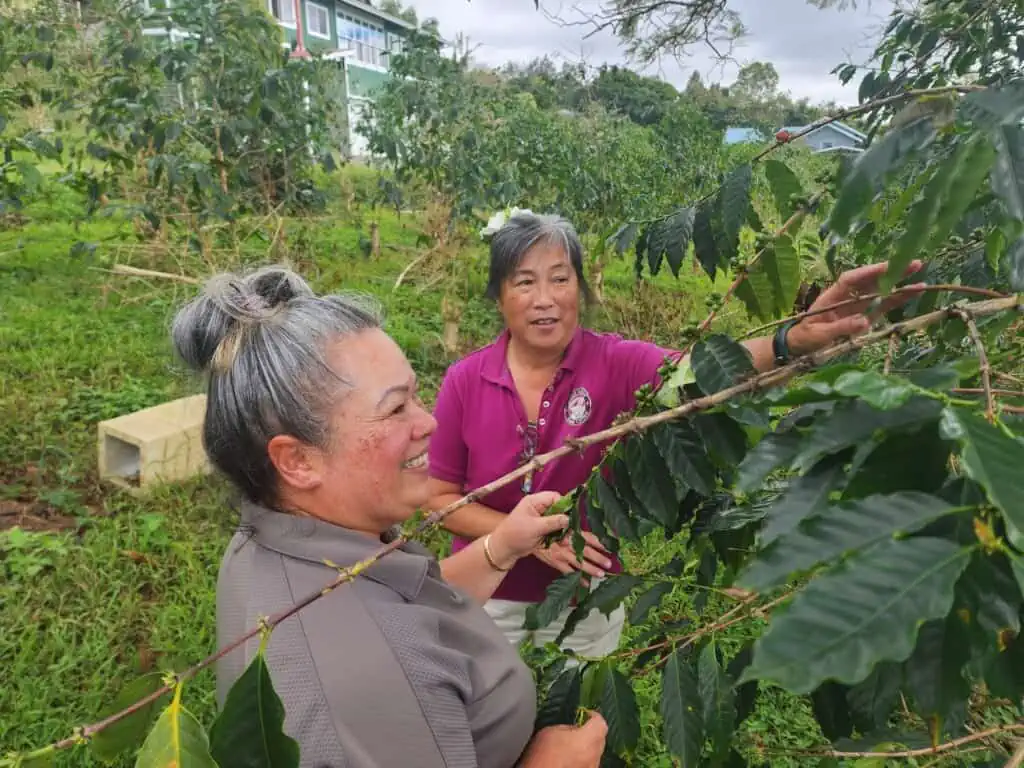
Laura Ross (left), roaster, and Karen Paterson, co-owner of Hula Daddy Kona Espresso. Courtesy of Hula Daddy.
The top-scoring espresso on this file was once Hula Daddy’s wildly spectacular Laura’s Reserve SL34 (97), produced on the corporate’s farm in Holualoa (North Kona) and roasted via Laura Ross, who’s been with Hula Daddy for greater than a decade. Co-owner Karen Paterson, who based Hula Daddy along with her husband, Lee, in 2002, says, “The key problem of rising espresso in Hawaiʻi is hard work prices. With advantages, our moderate hourly pay is over $25. A Central American grower will pay staff not up to $2 an hour acting the similar paintings, and hard work charges in African international locations are round $20 a month.” Hula Daddy sells best retail-roasted espresso (versus inexperienced espresso or wholesale), each onsite and on-line, all solely from the Patersons’ personal 10-acre farm. Its number one shoppers are purchasing espresso for house use, and best 10 p.c reside in Hawaiʻi. The SL34 is an aromatically intoxicating Kona model of a number of Arabica historically grown in Kenya and is exuberantly advanced.

Kraig Lee of Kona Farm Direct raking coffees drying on a concrete patio. Courtesy of Kona Farm Direct.
Kraig and Leslie Lee of Kona Farm Direct were rising ordinary Kona espresso for greater than 25 years. Up to now 8 years, they’ve begun experimenting with new sorts, together with Geisha. Kraig Lee says, “Undoubtedly, the original Kona soil and atmosphere can produce probably the most highest high quality coffees on the earth, however there are dozens of the way you’ll screw it up. For those who don’t take note of the main points, you’ll flip nice espresso into moderate or worse. I’m so lucky that I’ve workers who delight themselves in taking good care of the land, selecting best ripe cherries, and correctly processing and drying the beans.” Kona Farm Direct’s 100% Kona Vintage (94) is a full of life, balanced Typica, sweet-toned, chocolaty and wealthy.

Lorie Obra, co-founder of Rusty’s Hawaiian in Pahala Hawai’i. Courtesy of Rusty’s.
Rusty’s Hawaiian is any other longtime circle of relatives farm, founded within the Ka‘ū rising area at the east facet of Hawaiʻi Island south of Hilo. Based via Rusty and Lorie Obra within the overdue Nineties, Rusty’s was once at the cusp of constructing a reputation for Ka‘ū espresso, a area within the shadow of Kona. When Rusty died of most cancers in 2006, Lorie dedicated to actualizing their dream, and Rusty’s, now a world-class roaster as neatly, put Ka‘ū at the map. Rusty’s Vintage Ka‘ū Peaberry (94) is luxurious, decadently candy, deep-toned and sensuous. Lorie’s daughter, Joan, and son-in-law, Ralph Gaston, moved from the mainland to Pahala (the place Rusty’s is positioned) full-time in 2011, and the couple run the operation with Lorie, who’s nonetheless going robust in her seventies. Gaston says that there are lots of demanding situations excited by farming espresso in Hawaiʻi: “The higher value of manufacturing, basically because of the unfold of espresso leaf rust, has been tough to maintain. This implies extra for remedy of CLR, managing that with the remedy for espresso borer, higher prices for fertilizer, to not point out emerging hard work prices. It’s a large number of force on the price of manufacturing.” A complete 40 p.c of Rusty’s on-line shoppers are founded in Hawaiʻi, and the rest 60 p.c are from the West Coast (California, Oregon, Washington) and Alaska, with a small proportion in Canada, Japan, Germany and Korea.
Kona’s Heavenly Hawaiian is one among a number of Hawaiian farmer-roasters running with non-traditional sorts of Arabica. The Kona Geisha Champagne (94) submitted for this file has sublime notes of nectarine, celebrity jasmine and cocoa nib, a profile similar to the normal Geishas of Panama.
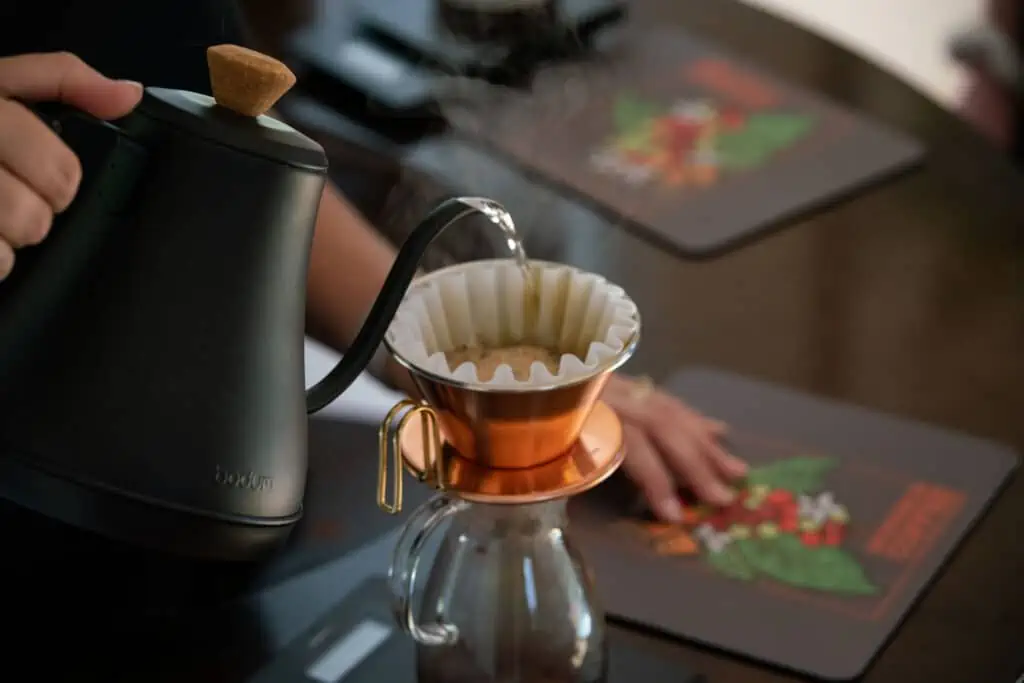
Brewing a pour-over at Monarch Espresso Farm in Kona, Hawai’i. Courtesy of Monarch Espresso.
Monarch Espresso’s “Hapa” (that means “part”) (93) is a post-roast mélange of light-, medium- and dark-roasted Kona Typica, a comfortingly acquainted Kona profile that’s crisply chocolaty and sweetly nutty. Abby Munoz, director of operations and daughter of co-founders Greg and Susy Stille, describes Monarch’s dating with its shoppers as collaborative: “The values our shoppers grasp pricey — high quality, sustainability, moral sourcing, network involvement and enriching reviews — information their buying selections and loyalty to our emblem. … This connection is going past a transactional dating; it’s a shared adventure against a extra sustainable and community-focused way of life.” She additionally speaks to the demanding situations of promoting Kona coffees solely, pronouncing, “In comparison to different primary coffee-producing international locations, Kona’s output is minuscule, and limited rising areas with strict geographical laws that restrict manufacturing space approach restricted provide, which results in upper manufacturing prices. Logistics and sustainability also are massive demanding situations for us. Because of the island’s far flung location, transport prices are a big hurdle.” Munoz additionally mentions CLR, volcanic eruptions, the consequences of local weather alternate, prime hard work prices and hard work shortages as further demanding situations for small farms in Hawaii.

Jean Orlowski of Hala Tree Espresso undertaking a farm excursion. Courtesy of Hala Tree.
Hala Tree’s SL28 Honey (93) is any other selection related to Kenya that, produced within the context of Kona terroir, is floral, citrusy, cohesive and assured. Hala Tree co-owner Danielle Orlowski says, “Having prime manufacturing prices pushes us to verify we produce one of the most highest coffees on the earth. That is completed via taking note of main points, from farming to processing. Being in regulate of the method from tree to cup is what guarantees our high quality.”
Kona-born Mark Takizawa has a five-acre farm, Kona Hills Espresso (to not be perplexed with the large-scale 1,900-acre farm via the similar title), the place he’s executed the whole thing himself since 1987. His 100% Kona Further Fancy (92) is a vintage profile with notes of baking chocolate, date and hazelnut.
Hawaiian Roasters That Promote Handiest Hawaiian Coffees
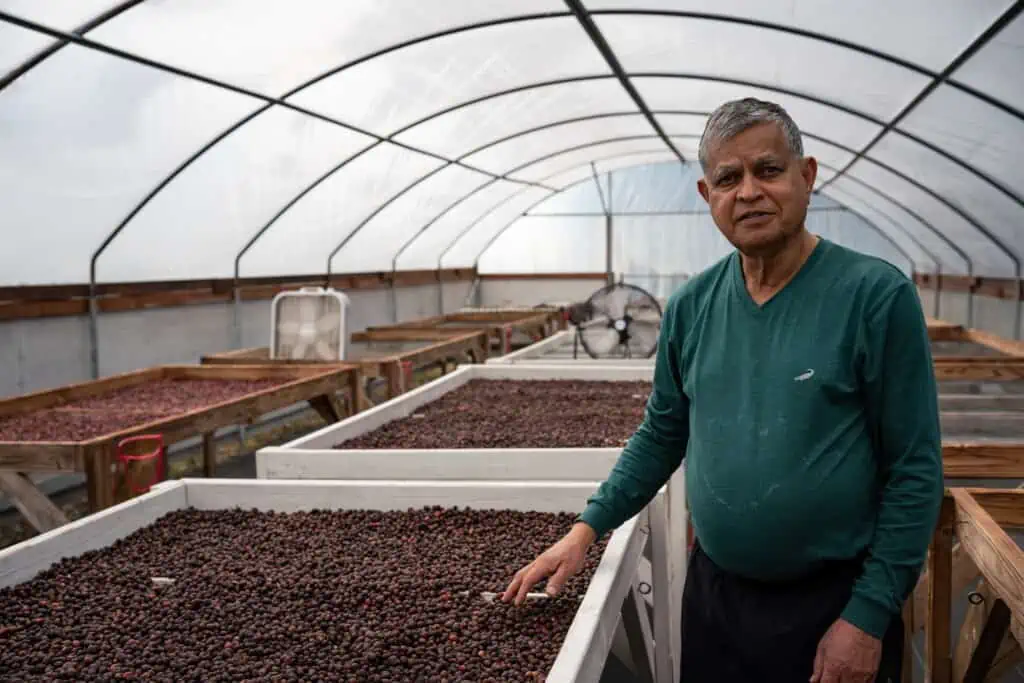
Miles Mayne, of Silver Cloud farm, checking on espresso drying on raised beds. Courtesy of Braden Tavelli.
Giant Island Espresso Roasters despatched in a collaborative espresso in partnership with farmer Miles Mayne. This Ka‘ū Large Maragogipe (95) is the results of co-founder Brandon von Damitz and Mayne’s many yeast experiments over 3 harvest seasons. The model they landed on makes use of K1-v1116 yeast from Lalvin, with anaerobic fermentation for 72 hours. This uniquely composed, big-beaned Maragogipe cup is pushed via notes of stone fruit, hop-like florals, resiny amber and distinct tangerine. Co-founder Kelleigh Stewart recognizes the demanding situations of running solely with Hawaiʻi-grown coffees, but additionally speaks to the alternatives it provides: “When other folks ask, ‘Why is Hawaiʻi espresso so dear?’ this initiates a discussion for deeper engagement and working out of the provision chain. There’s so a lot more provide chain transparency and ethics with Hawaiʻi coffees. And the chain is way shorter as a result of there’s little room for heart other folks. And a miles higher proportion of the acquisition worth is going at once to the farmer. … So, whilst coping with an ‘dear’ product poses demanding situations, it’s simple for us to be pleased with our farmer relationships, realizing we’re fostering a moral, clear provide chain. I frequently flip the query round and ask other folks, ‘Why is the remainder of the sector’s espresso so affordable and undervalued?’”
Pacific Espresso Analysis (PCR) has a fascinating backstory. A women-owned industry based as Hawaiʻi’s first training and occasional coaching middle, PCR provides research of inexperienced and roasted coffees, Q-grader lessons, barista coaching, apparatus procurement and upkeep, and a lot more. And now, PCR has its personal line of retail-roasted coffees advanced in partnership with native farmers with an emphasis on females manufacturers. The 100% Ka‘ū Navarro (93) submitted for this file, a mix of Pacamara and Catuaí, is from Delvin and Nette Navarro’s Ka‘ū farm. Targeted round fruit and floral notes, this mix is sophisticated via a compelling candy herbaceousness. Co-owner Madeleine Longoria Garcia additionally notes the restricted provide of Hawaiian-grown espresso, the affects of CLR and the 2023 wildfires as important demanding situations of running solely with Hawaiʻi-grown coffees.
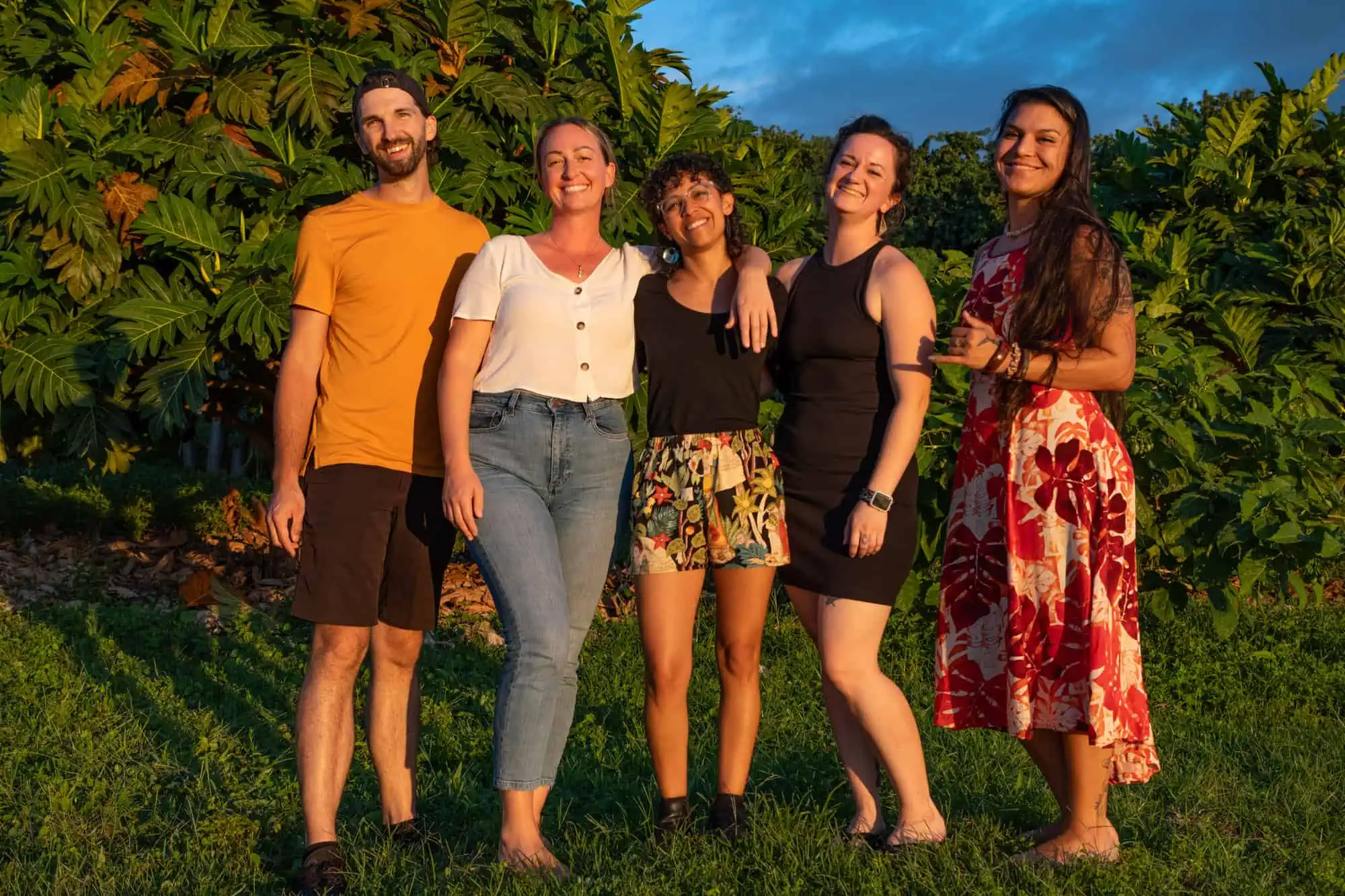
The Pacific Espresso Analysis crew. Courtesy of PCR.
However as well as, she argues, “The associated fee fashion utilized in Hawaiʻi will have to be replicated globally. So as to have financially sustainable companies, growers want so that you can promote their merchandise in accordance with their actual prices and required benefit margins as opposed to having their merchandise’ price being dictated in accordance with the place the C-market occurs to land on any given day. Our world business talks about this at all times, as we don’t have a financially sustainable business, and no person is truly doing very a lot to modify that. The present fashion provides patrons an excessive amount of energy on the subject of worth and strips growers of negotiation energy as a result of everyone seems to be having a look on the C-market.”
Hawaiian Roasters That Promote Each Native and World Coffees
Little-known truth: It’s unlawful for roasters in Hawaiʻi to import inexperienced coffees from Africa. This out of date regulation hearkens again to considerations about agricultural contamination, but it surely’s nonetheless at the books, and it’s why you’ll see coffees from Central and South The us and Indonesia at native island espresso retail outlets — however now not African coffees.
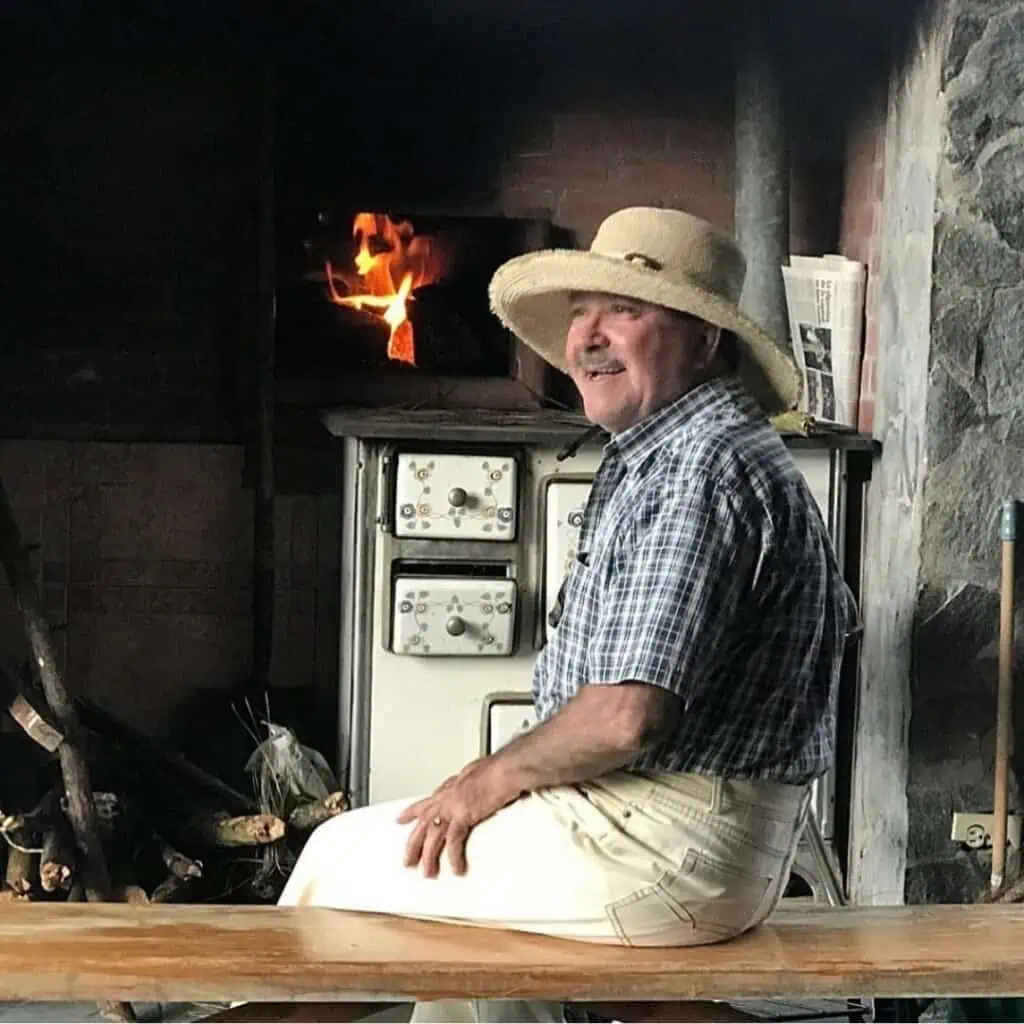
Teodoro Garrido, founding father of Mama Cata Farm in Boquete, Panama. Courtesy of Klatch Espresso.
Well known to the digital pages of Espresso Assessment, Hilo-based Paradise Roasters used to have a roasting facility in Minnesota. Now that the corporate is absolutely Hawaiʻi-based, proprietor Miguel Meza focuses on uncommon microlots from the Philippines, Thailand, Vietnam, Panama and, in fact, Hawaiʻi. For this file, we evaluation the richly floral, fruit-saturated Panama Mokkita Herbal Mama Cata Property (96) with notes of untamed strawberry, lavender and black sage. Meza says, “We didn’t get started out as a roaster of Hawaiʻi-grown coffees, however relatively as a distinctiveness espresso roaster. Because of the extraordinarily prime value of manufacturing espresso in Hawaiʻi, 10 instances that of maximum different international locations, the marketplace for Hawaiʻi-grown coffees is restricted as a daily-drinking espresso for many customers. Additionally, we adore selection and need to be offering the widest array of sensory reviews imaginable with espresso, a few of which can’t (but) be discovered inside espresso simply from Hawaiʻi.” He provides that, “Like each different generating foundation, nearly all of the coffees produced in Hawaiʻi are industrial high quality, now not distinctiveness. As an overly small generating area, the amounts of top quality espresso from Hawaiʻi are moderately restricted. A lot of our Hawaiʻi coffees we produce from the cherry degree to verify high quality and observe proprietary processing tactics on them to create a range of cup profiles.”
Maui-based Foundation Espresso Roasters submitted a JN Farms Double Anaerobic Pink Bourbon (94) produced in Ka‘ū, an aromatically wide-ranging cup with notes of spice-toned florals and sweetly tart end result. Proprietor Heather Brisson-Lutz loves Hawaiʻi-grown coffees however unearths that she must additionally supply coffees from different origins for her native buyer base: “It’s difficult to marketplace coffees now not grown in Hawaiʻi in our native markets, however we’ve discovered that most of the native citizens revel in those coffees as a result of they provide other flavors, and their worth issues are friendlier for on daily basis espresso drinkers. We need to stay our coffees available now not best in worth level but additionally with regards to taste profiles, processing strategies and sorts.”
Kailua, O’ahu-based ChadLou’s Espresso Roasters sells each Hawaiʻi-grown and global coffees. The Cruz Loma Anaerobic Washed Ecuador (93) we evaluation this is equivalent portions candy, tart and savory (suppose darkish chocolate, macerated kiwi and tarragon). Its widespread espresso store caters to each guests and locals, providing a big menu of distinctiveness espresso choices in addition to artfully designed luggage to take house.
Hanalei Espresso Roasters is a micro-roaster on Kauaʻi’s North Shore within the stunningly gorgeous the city of Hanalei. Its First light Mix (92) of coffees from Maui and Honduras is a pleasant, easygoing and reasonably priced espresso with notes of golden raisin, cashew, orange zest and cane sugar. The roaster has a choice of 100% Hawaiian coffees along with its coffees from Central and South The us.
Maui Oma Espresso Roasting Co.’s 100% Hawaii 3 Island Mix (92) is a mixture of coffees grown on Hawaiʻi Island, Maui and O’ahu. Cocoa-toned and richly nutty, it’s a just right creation to the coffees of the Hawaiian Islands for novices to the style. Maui Oma is positioned in Kahului, Maui, and basically works with Hawaiian coffees but additionally has a choice of coffees from Central and South The us and Indonesia.
Supporting the Hawaiʻi Espresso Business
No matter your espresso jam could be, Hawaiian roasters be offering the sector in a cup. Along with purchasing espresso at once from the roasters featured on this file, you’ll make stronger Maui’s wildfire restoration efforts right here:
MauiGrown Espresso – Move Fund Me
Maui Meals Financial institution

Leave a Reply